We all want the best equipment, but don’t want to pay too much for it.
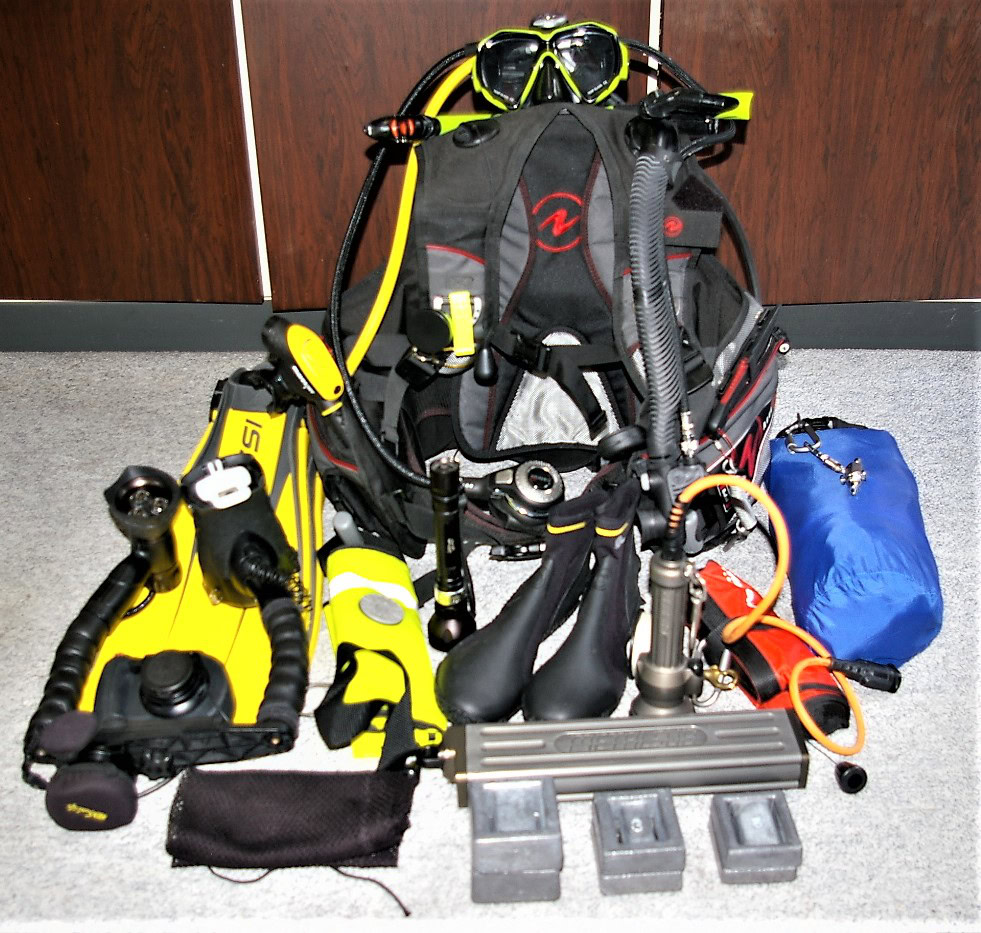
After many years of trial and error I came to a dive equipment what’s affordable, but has everything I need.
–
Let’s start with the BCD.
Many of us started with a BCD as just a piece of equipment what could hold some air to let us be stable under water and floating on the surface. After a while we all want some more than only that. We want pockets to store a backup light, reel and buoy. We also want some D rings, as much as possible, to hook something on, lead pockets, so we don’t need that lead belt anymore, a place to store a knife, so that’s not on the leg or inflator hose anymore and a good system to store the octopus, manometer and console.
For stability in the water it’s good to have and use lead pockets on the back too. The disadvantage of having only lead pockets on the side you will especially notice on the surface. It will tilt you forward. With some little weights at the back you will be more stable in the water.
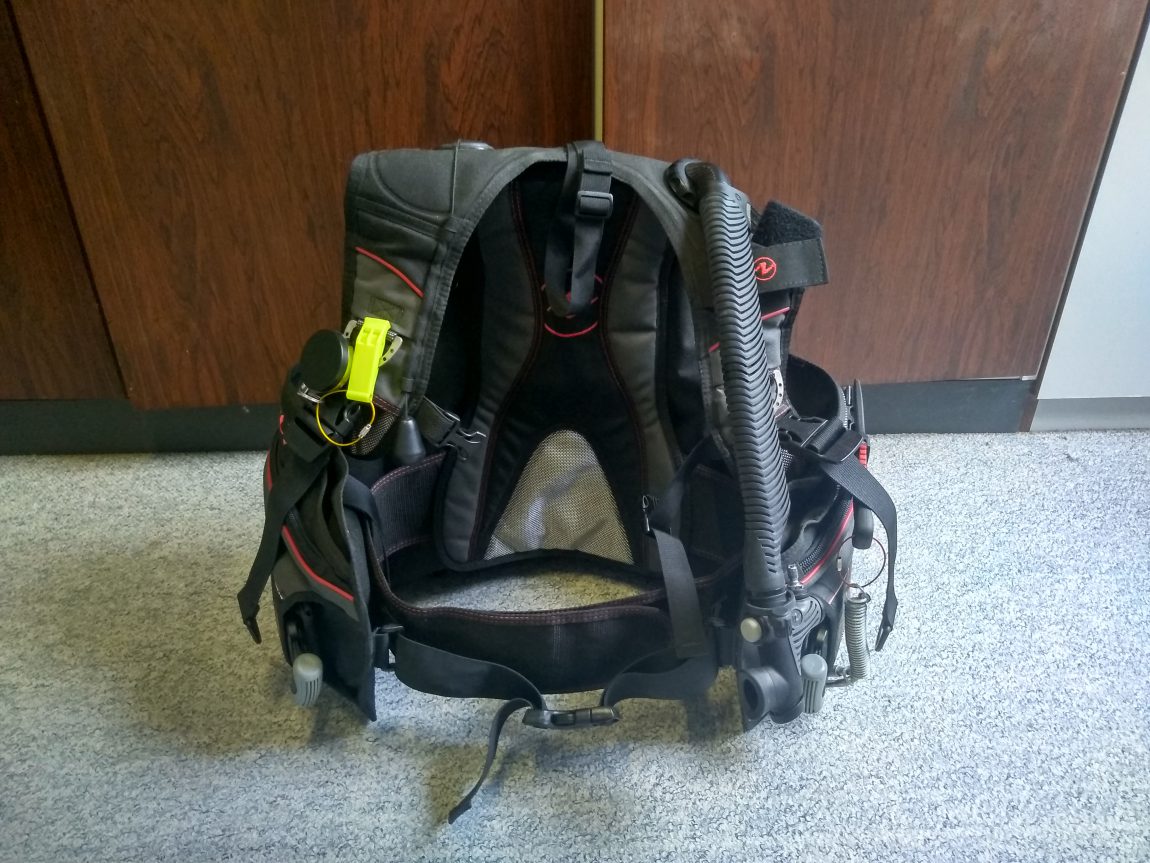
I have tried many brands and models, but always come back at Aqualung. This and the last time I chose the Pro LT.
This BCD has it all for me.
-Big pockets
-Enough D-ring
-Easy to remove lead pockets + small lead pockets on the tank belt
-A place to store a dedicated knife
-many openings to stick the octopus and manometer in
-Very comfortable
The next piece of equipment is the most important. The regulator.
Without a regulator we cant go scuba diving for longer than just a few minutes. With a bad regulator too. When we can’t breath easy a dive isn’t fun and can even become dangerous, so it’s very important to choose this piece of equipment very wisely.
It doesn’t have to be extremely fancy, but the cheapest ones can get you in trouble in deeper water, so best look for the better ones, but not the ones with the most bells and whistles on it. Bells and whistles can only brake down.
Better look for equipment what’s reliable and easy to service.
My favorite set at this moment is my Mares MR22T with Abyss second stage, MV octopus and Tusa manometer.
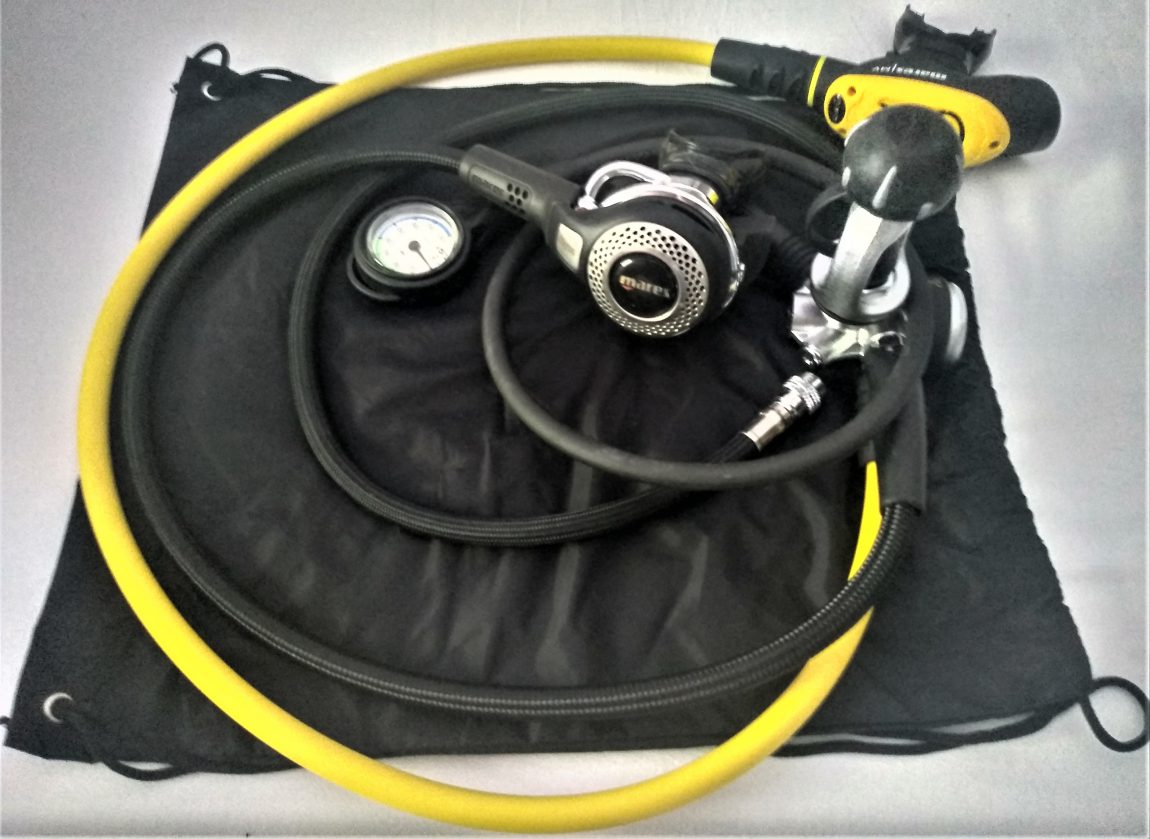
Yes, I dive with a yoke system. Most rental air tanks are yoke and when they’re din I use a din insert. You can use a yoke on a din valve. Using a din system on a yoke valve takes a big heavy yoke converter.
For me the octopus isn’t the most important piece of the regulator set, so I choose the smallest good one I could find. It doesn’t breath as perfect as the Abyss, but good enough as backup.
For me the main second stage must breath as well as without it in open air. That’s why I love the Abyss. It doesn’t matter at what depth I am, it always breaths as good and easy as on the surface and it’s virtually impossible to demolish.
The MR22t first stage is one of the best money can buy. It’s very easy to service and adjust. On top of it there’s a big adjusting nut with which you can adjust the medium pressure very easily.
Many first stages don’t have that possibility. When the medium pressure isn’t good you have to open them and add or remove washers or even a spring to adjust that. That’s not a thing you go do when you find out the medium pressure isn’t good in between 2 dives, on a boat or so.
The only disadvantage of the Mares set is that the second stage can’t be opened without a screwdriver, so not very easy to service or clean out under water. I especially don’t like that during a cave or wreck dive.
That’s why I have a separate set for cave and wreck diving.
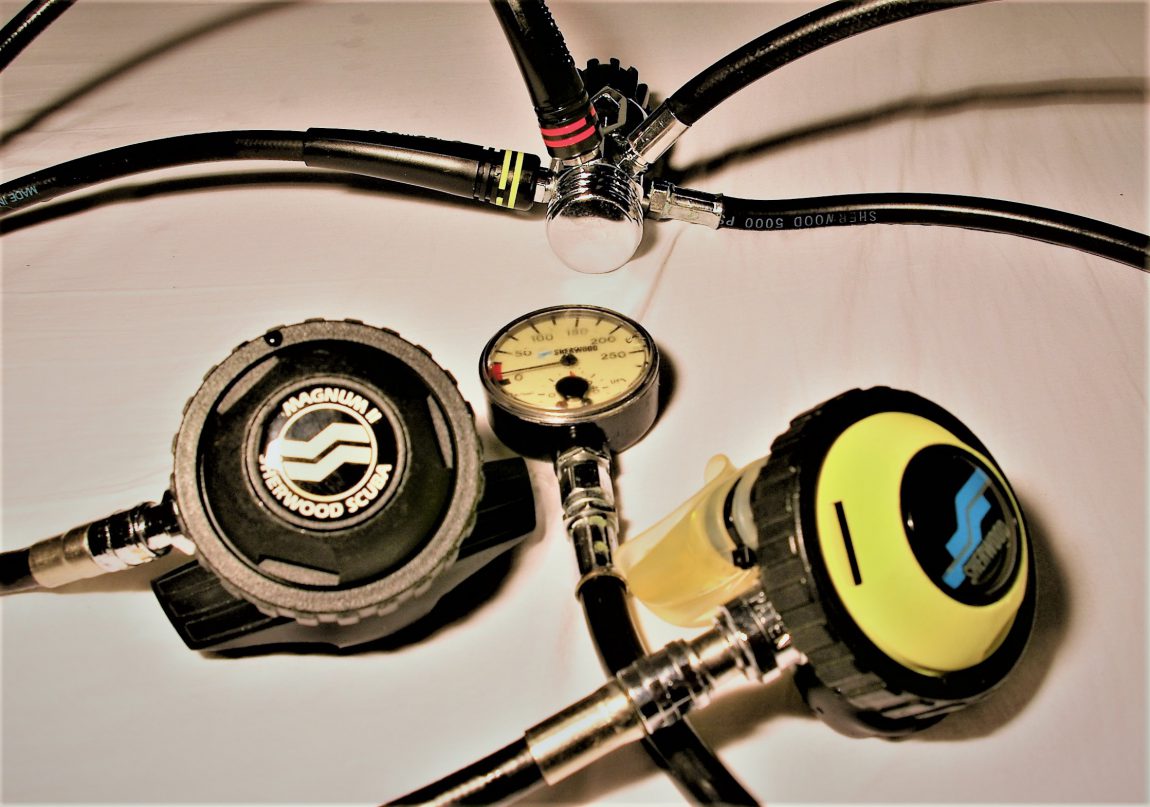
The cave and wreck set is a Sherwood scuba Magnum II set. It’s a simpler set than the Mares and doesn’t have an adjustable first stage, but it’s so solid build I haven’t had to adjust it once in the 10 years I have it now. This is real American quality.
Diving lights
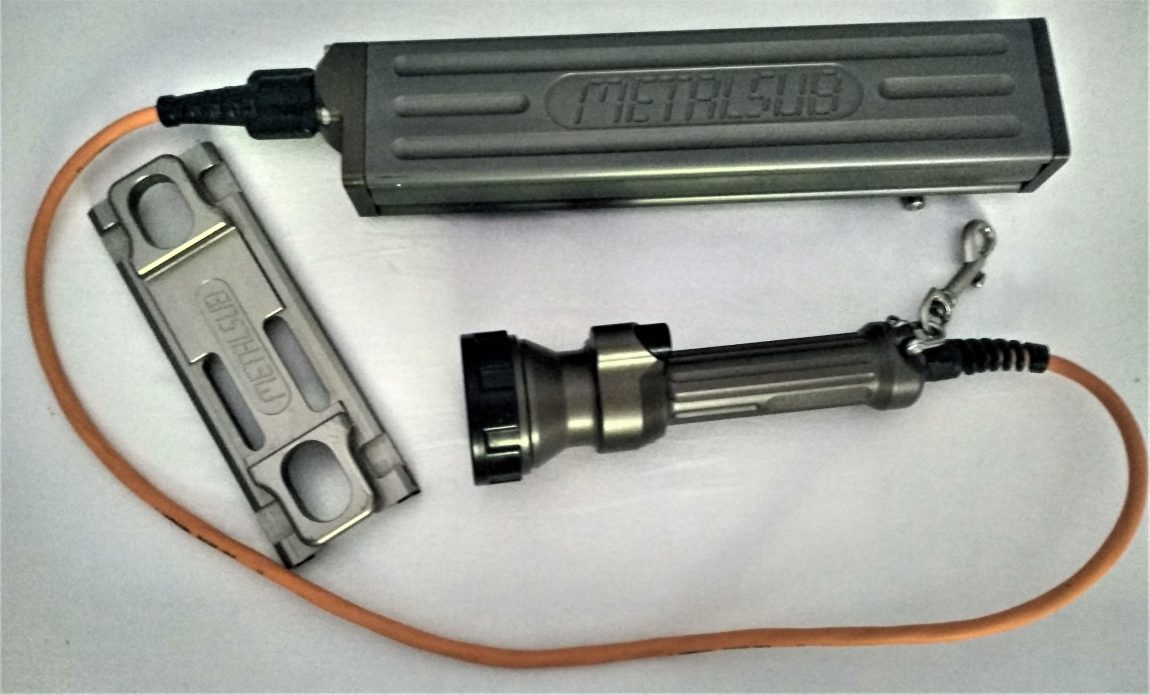
When we go for a night dive we need a diving light, but it’s also very useful for cave and wreck diving or diving in murky waters. Some people prefer a lightweight LED light. In my own country I don’t. For travelling I do.
Most LED lights have a very uneven light spectrum. I prefer a light spectrum as near to sunlight as possible. So my choice, when possible, is a good halogen light. Halogen lights take lots of watts, so a good big battery pack is needed when you want to use it for more than a half an hour per day.
I have tried many different brands and types. Most don’t last for long enough or start leaking in just a few deeper dives. That’s why I prefer the unfortunately very expensive and heavy Metalsub lights from the Netherlands. They’re heavy, but almost unbreakable. I have this one now for about 8 years and it never broke down. Only changed the batteries about a month ago, because the old once were getting bad.
Backup/Travel lights
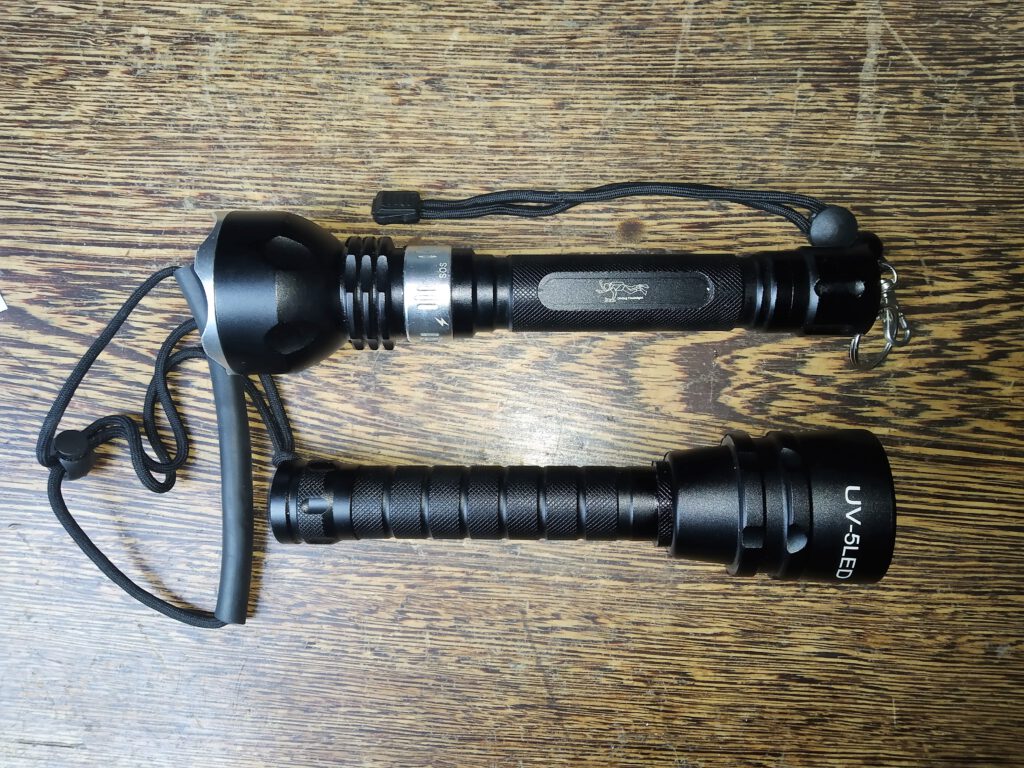
My Metalsub light has never let me down so far, but although I also always take my backup light with me. Even when I’m not planning to go cave or wreck diving, sometimes I come in a situation where a diving light is handy, to see in small caves or under overhanging things, so this light is always in my pocket.
It also proved it’s purpose a few times when diving lights from friends broke down.
I also have a UV led light. Just for the fun of it. Corals and some animals light up very bright under UV light.
The white (upper) one is just a simple 1 XLM-L2 LED Chinese thing, what works on 2 – 18650 Li-ion cells, but bright enough to see everything you want to see. Even during a night dive. The only disadvantages is the uneven spectrum, what causes strange colors, especially in the red and blue spectrum, and it only lasts for about 1,5 hour on the best 18650 batteries available.
The UV light has 5 smaller leds than the white light and only last for about 1 hour on 2 – 18650 batteries.
Dive computers/watches
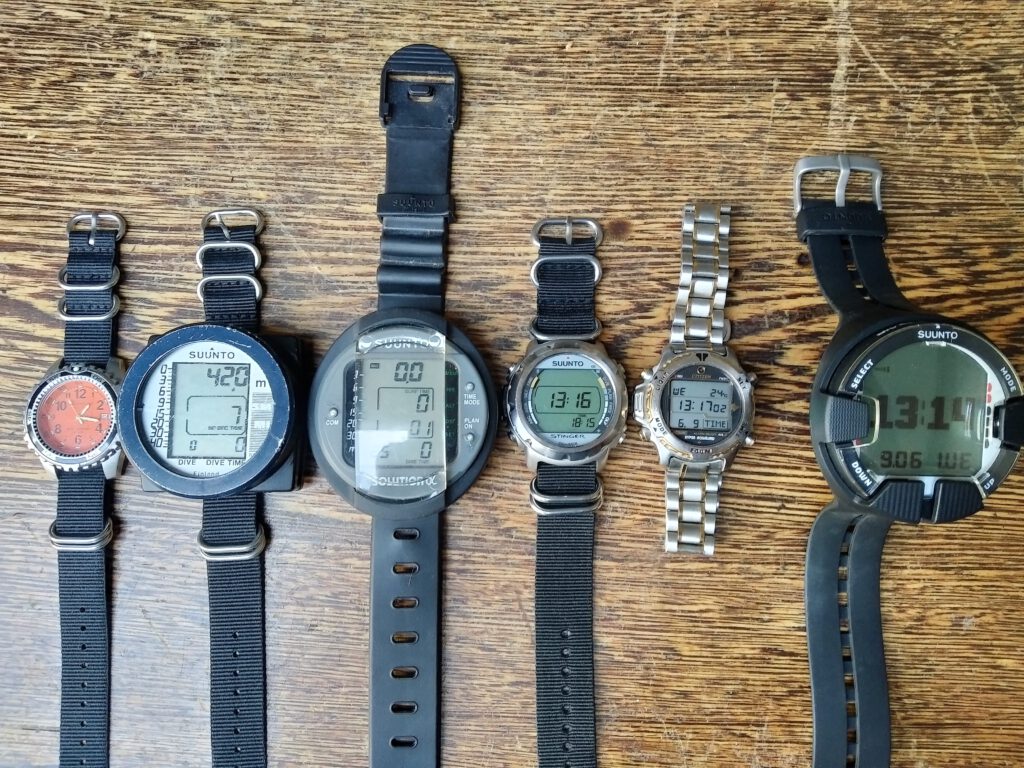
I have several types of dive computers. The Citizen Promaster Hyper Aqualand D202 with metal band is almost always on my wrist. The Suunto Stinger, with the nato strap, is also a very nice watch, but a bit heavy. The air integrated Suunto Vyper Air, with transmitter that goes on the high pressure fitting on the first stage, is still in my diving bag, waiting for it’s first dive. Soon.
Most of the time I plan my dive up front and only wear the old orange Momentum watch.
The Suunto SME-ML was my first dive computer. Ten years later I bought the Suunto Solution A. Both are still working fine, when I use them. About ten years after the Solution A I bought the Suunto Stinger and that’s still my most used dive computer, when I use a dive computer.
Camera
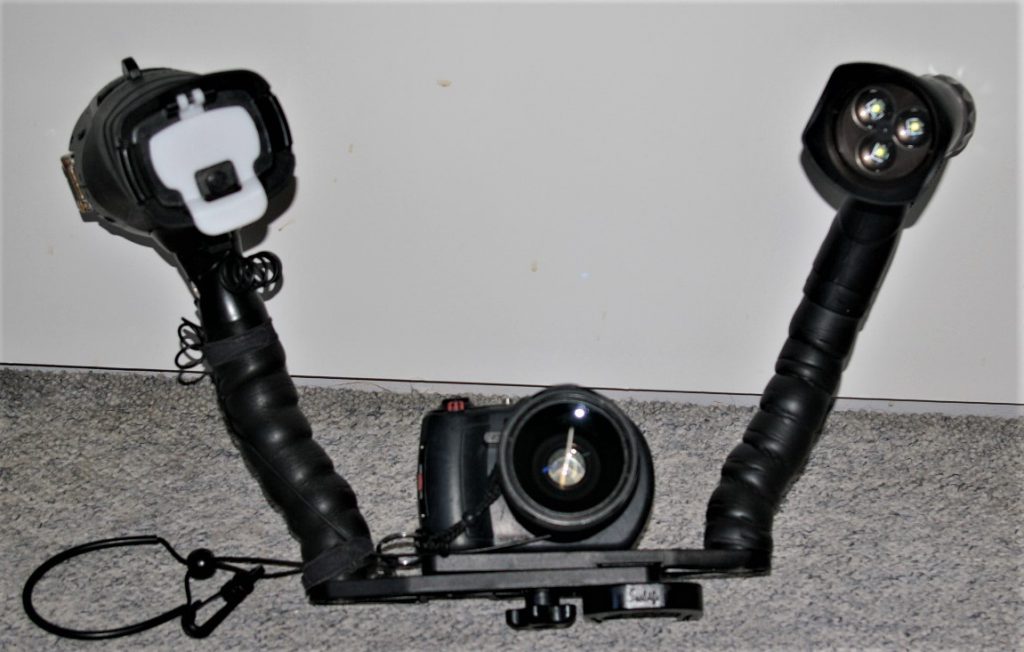
I have tried many camera’s, from compact till SLR, with and without external filters.
The best I found under €/$5000,- for a complete set, including lights, is the Sealife DC 1200.
I have the SL961 strobe flash with diffuser and the SL980 video/photo light with it. That combination is perfect for this camera. Can be adjusted so the video light shuts up when the strobe flashes or stay on when more light is necessary. That combination almost always gives a beautiful picture.
I also have a SL970 24mm wide angle lens for it, what fits in a cradle under the camera and clicks on the front of the under water housing very easy, so I can switch from normal to wide angle in just a few seconds during a dive.
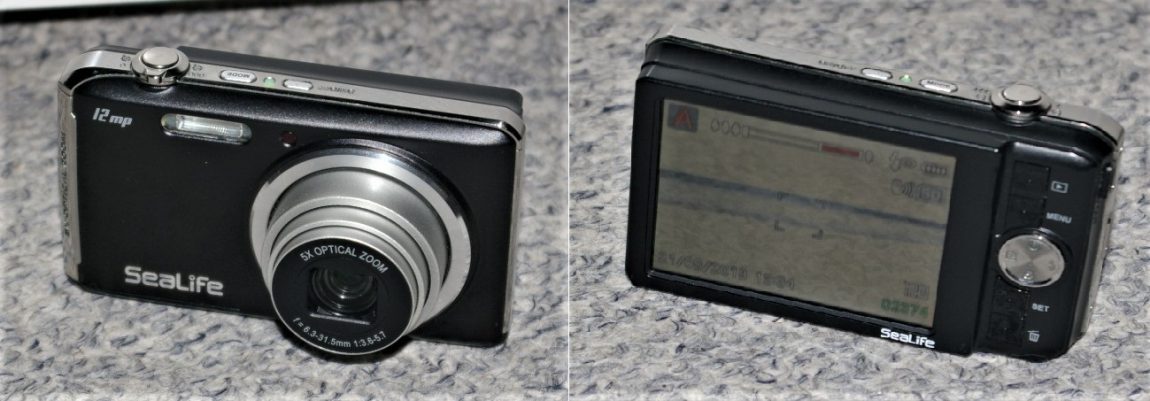
The little compact 12Mp camera can also be used for photography on the shore, and makes very descent pictures, but it really outshines under water.
It has a very easy menu where you can set whether you want to take pictures above water, under water and how deep, below or under 8 meters/24 feet, and with or without extra lights. It also has many manual settings, for the more advanced photographers and even a video mode. That’s not very special, it’s just 720p, but in very good quality. I think the quality is much better than from a GoPro.
It’s not the most compact set, but also not the biggest, by far.
Diving suits
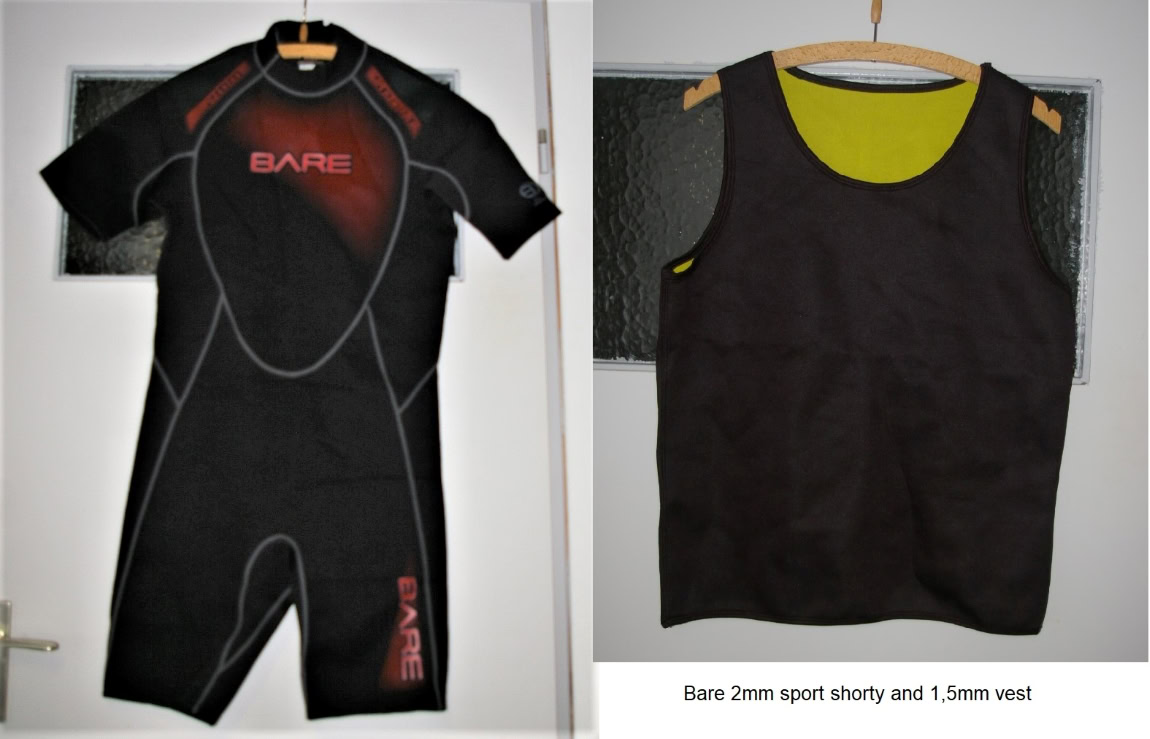
When I dive in the tropics, where the water temperature is between 26 and 32°C (79-90°F) I mostly use just a 2mm shorty and sometimes a 1,5mm vest under or over it.
The shorty has to fit like a glove, so the water barrier between the suit and the skin is very thin. That also applies for suits in cold water. The better the suit fits the better it keeps your body warm.
In cold water I prefer a dry suit. I especially like the Bare Sentry Pro.
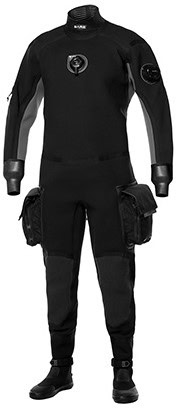
This suit is constructed with high density neoprene. It almost has the same flexibility and comfort as a tropical wetsuit.
Gloves
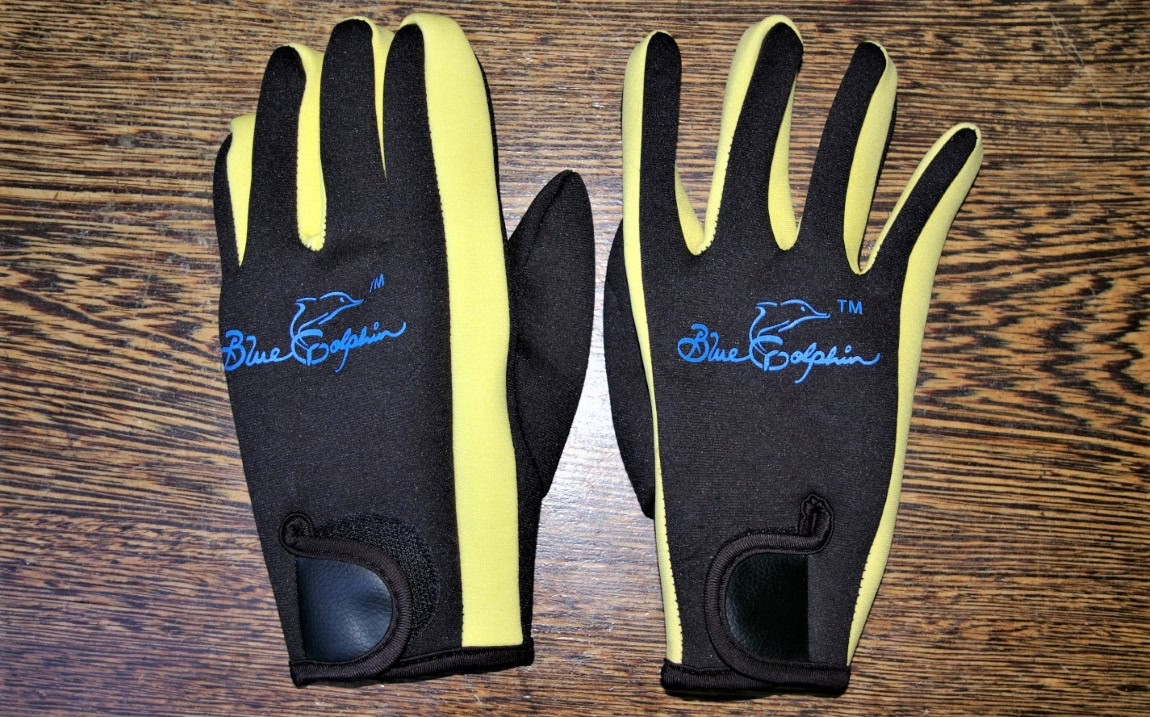
In the tropics diving gloves aren’t that important. I only use them occasionally, for picking up trash what can be sharp or poisoned. That’s why I use the cheapest ones I can find, as long as they’re not too tight or wide. They also have to fit like a glove. Especially in the coldest waters, where you need gloves to protect you against low temperatures.
Gloves also are very personal, so I always buy them in a store, where I can fit them.
Diving hood
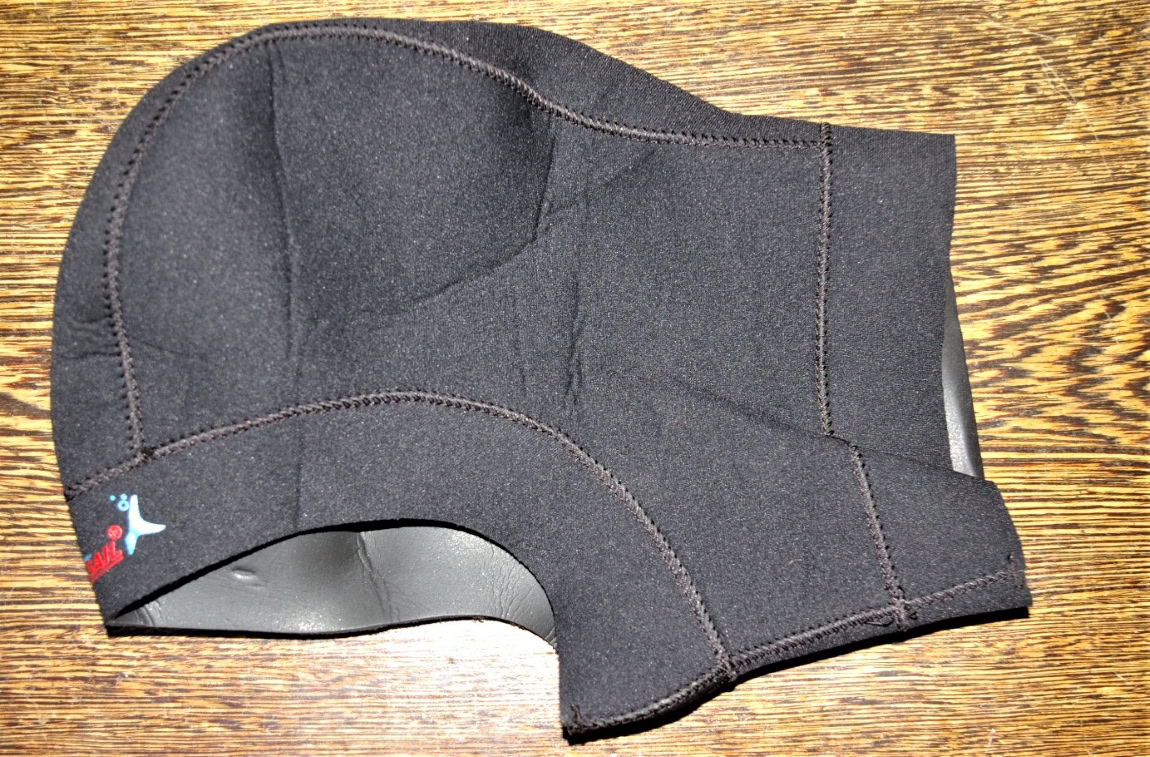
Again, in the tropics, most of the time this piece of equipment isn’t really necessary. But very handy to protect long hair. I have long hair and that will become a mess after a dive if you don’t pack it in a hood. That’s why I have a 1mm hood for the tropics, but almost never use it, because even the 1mm ones keep a lot of heat inside.
For in colder water a hood is way more important. This also has to fit like a glove. Not too tight, not too loose. So always try it on before purchase a suit, gloves and hood. If it’s too tight you don’t feel good diving, if it’s too wide you will get cold and have more drag in the water.
Mask and snorkel
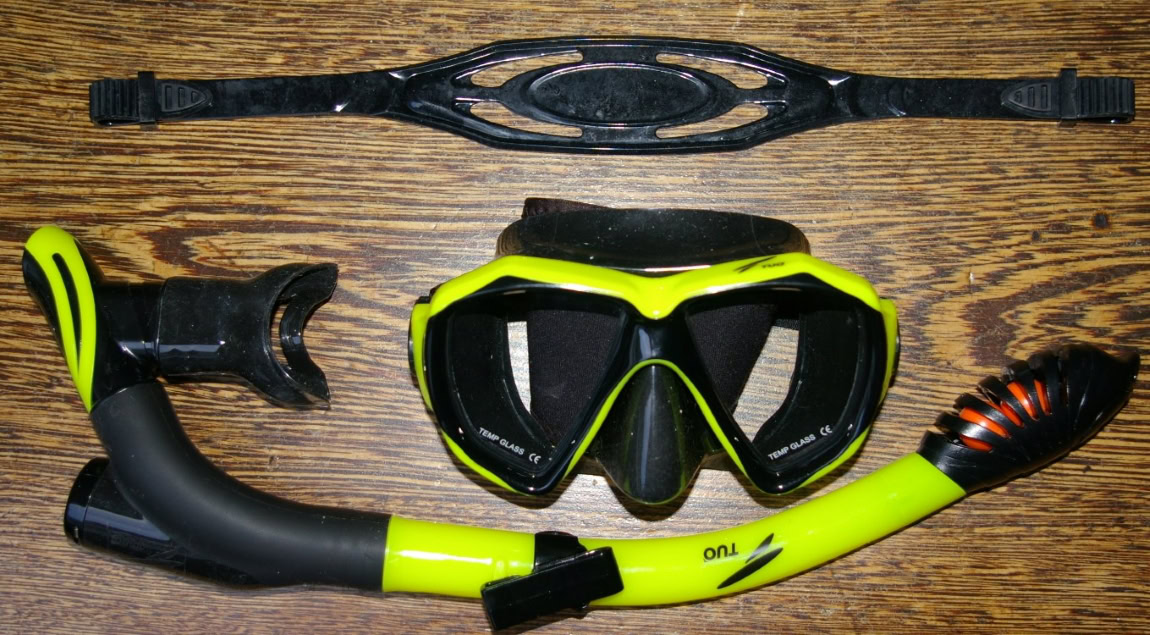
Also the mask and snorkel are very personal diving items. They have to suite you. There are many, many different masks and snorkels, for many different people, with different faces and different requirements.
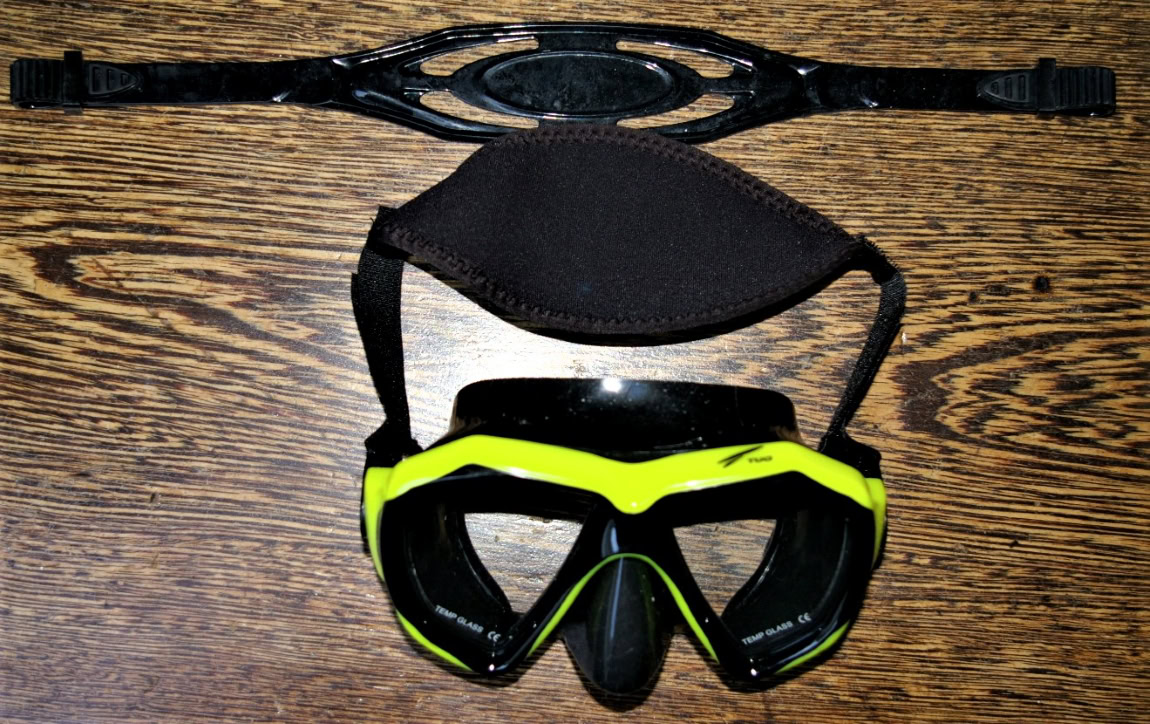
Again, a mask needs to fit like a glove. You do’t want any water to come in during a dive. So you also have to go fit a mask before you buy one. Not every mask is good for every face. Just keep on trying till you found the one that fits your face perfect. Place it on your face, hold your nose closed and breath through your mouth. A good mask has to stay on your face without support.
Most masks come with a latex or silicon strap. They’re not good for your hear. That’s why I replace those for a neoprene strap. Sometimes the one what goes over de strap, sometimes a full neoprene one. Depends on the quality of the straps I can buy at that moment.
In cold water I prefer a full face mask, but not the big ones, like the Ocean Reef. I have an older Scubapro Full face mask.
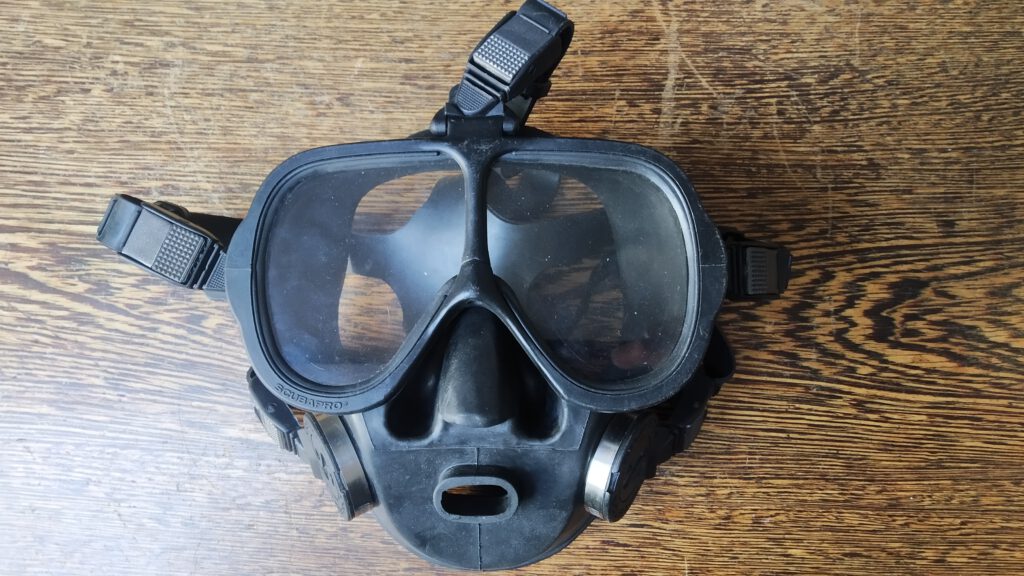
I can fit every second stage I want on this mask and it fits in my scuba bag, with all my other equipment.
For me this mask is the most comfortable and most portable one I can find. Most full face masks are bulky. So not so good for traveling. This one fits in the bag like any other mask.
Snorkel
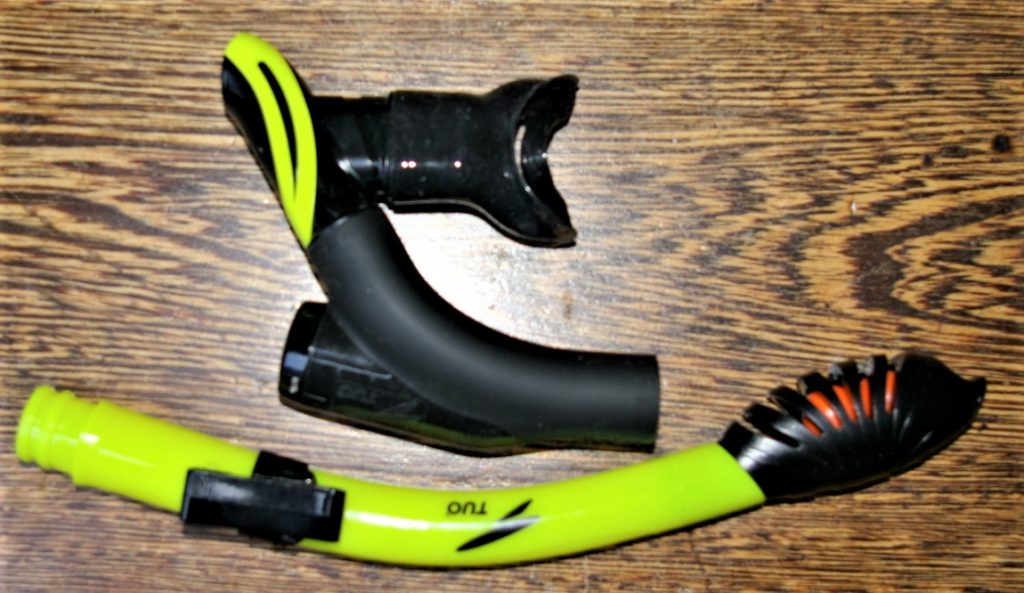
The snorkel is also a very personal scuba diving item. I prefer a snorkel what can be split up in peaces easily, so it fits in my backpack. And it must have a water stop system on the top, pus a good blowout system/membrane on the bottom. I really don’t want to breath water in stead of air.
Diving Knife
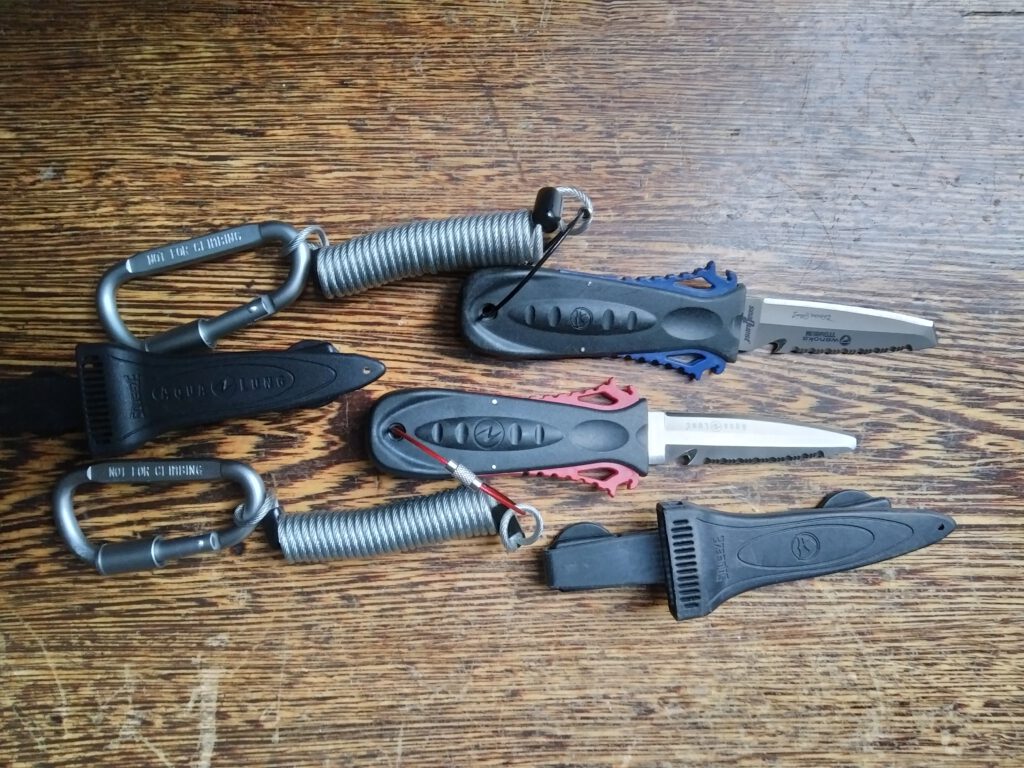
Some people prefer a big diving knife. I don’t. I prefer a small useful knife, what doesn’t feel like a steel ball around my leg.
A big knife doesn’t cut more rope and isn’t really handy for protection. The smaller the knife the more easy you can move it in the water. A small knife is also more easy to store and gives you less drag in the water.
The most important function of a divers knife is that it has to cut and is always in reach. That’s why I prefer a small knife what can be fit on my BCD and has the possibility to secure it on both sides; The shaft and the handle. It’s not nice if you drop your knife and see it disappear into the deep. That’s why I always secure my knife with a spiral cord.
MicDiver©
.